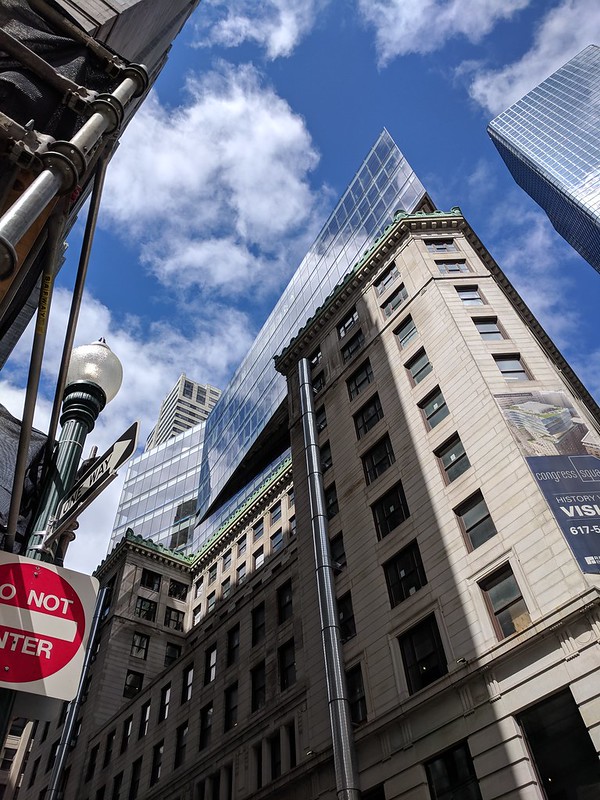TheRifleman
Banned
- Joined
- Sep 25, 2008
- Messages
- 4,431
- Reaction score
- 0
I have no idea what to think of this. Ill wait till I see it in person, but probably still wont know...either way its here.
Looking at the pictures I want to PUKE. This is awful
I have no idea what to think of this. Ill wait till I see it in person, but probably still wont know...either way its here.
+1 as well. I walked by it recently and it's good. It's a frankenstein's monster but it looks pretty good.
I went by a few weeks ago and think it's inoffensive in person, at least when viewed from Post Office Square. You don't really notice it because it blends into the other buildings unless you're trying to look at it. Zoomed pictures highlight it in the worst possible way IMO.
I didn't see it from the Congress Street angle so no opinion there.
So not Boston
So not Boston
There's something incredibly Boston about this to me: downtown is so good at doing that layered, oblique thing where every era of the city's history is visible at once. These pictures reinforce that from nearly every angle, the observer's eye is tricked into thinking these are two different buildings, with the base building occluding the addition. Even up close it somehow appears that the new building is behind the old one. I think it adds depth to the fabric.
This is a counterfactual because we don't know what it would have looked like for this addition to respond to its host with imitation, but I think it makes a convincing case that having no architectural response at all can be a successful strategy. I don't think it could work everywhere but in our windy downtown it does.


There's something incredibly Boston about this to me: downtown is so good at doing that layered, oblique thing where every era of the city's history is visible at once. These pictures reinforce that from nearly every angle, the observer's eye is tricked into thinking these are two different buildings, with the base building occluding the addition. Even up close it somehow appears that the new building is behind the old one. I think it adds depth to the fabric.
This is a counterfactual because we don't know what it would have looked like for this addition to respond to its host with imitation, but I think it makes a convincing case that having no architectural response at all can be a successful strategy. I don't think it could work everywhere but in our windy downtown it does.
